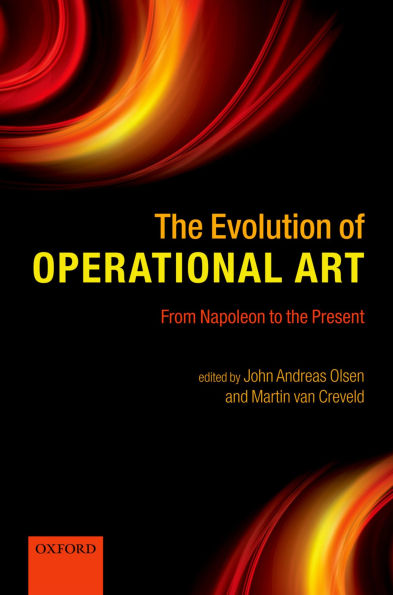Broadly defined as the grey area between strategy and tactics, operational art spans the theory and practice of planning and conducting campaigns and major operations aimed at accomplishing strategic and operational objectives in a given theatre of operations. An intermediate link between strategy and tactics has always existed, but a distinct concept that encompasses a systematic and deliberate plan of campaign for major operations is a mere two hundred years old. Based on country specific case-studies, this book describes how the concepts that underpin operational art originated, how they received practical expression in various campaigns, and how they developed over time. The point of departure is the campaigns of 'the God of War', Napoleon Bonaparte. The book then proceeds with chapters on the evolution of operational art in Prussia / Germany, the Soviet Union / Russia, the United Kingdom, United States, Israel, and China. The final chapter deals with the future of operational art in irregular warfare. Theory is critical to refining and improving existing methods of applying operational warfare, and its importance cannot be overstated; however, to be useful, theory and its accompanying vocabulary must be combined with a proper examination of historical trends and practical experience. The present volume attempts to achieve that combination. This book is a project of the Oxford Leverhulme Programme on the Changing Character of War.
1101395811
The Evolution of Operational Art: From Napoleon to the Present
Broadly defined as the grey area between strategy and tactics, operational art spans the theory and practice of planning and conducting campaigns and major operations aimed at accomplishing strategic and operational objectives in a given theatre of operations. An intermediate link between strategy and tactics has always existed, but a distinct concept that encompasses a systematic and deliberate plan of campaign for major operations is a mere two hundred years old. Based on country specific case-studies, this book describes how the concepts that underpin operational art originated, how they received practical expression in various campaigns, and how they developed over time. The point of departure is the campaigns of 'the God of War', Napoleon Bonaparte. The book then proceeds with chapters on the evolution of operational art in Prussia / Germany, the Soviet Union / Russia, the United Kingdom, United States, Israel, and China. The final chapter deals with the future of operational art in irregular warfare. Theory is critical to refining and improving existing methods of applying operational warfare, and its importance cannot be overstated; however, to be useful, theory and its accompanying vocabulary must be combined with a proper examination of historical trends and practical experience. The present volume attempts to achieve that combination. This book is a project of the Oxford Leverhulme Programme on the Changing Character of War.
135.99
In Stock
5
1

The Evolution of Operational Art: From Napoleon to the Present

The Evolution of Operational Art: From Napoleon to the Present
Related collections and offers
135.99
In Stock

Product Details
| ISBN-13: | 9780191037566 |
|---|---|
| Publisher: | OUP Oxford |
| Publication date: | 11/04/2010 |
| Sold by: | Barnes & Noble |
| Format: | eBook |
| File size: | 781 KB |
About the Author
From the B&N Reads Blog
